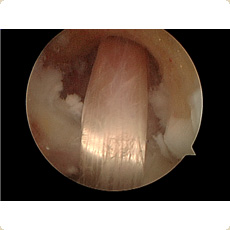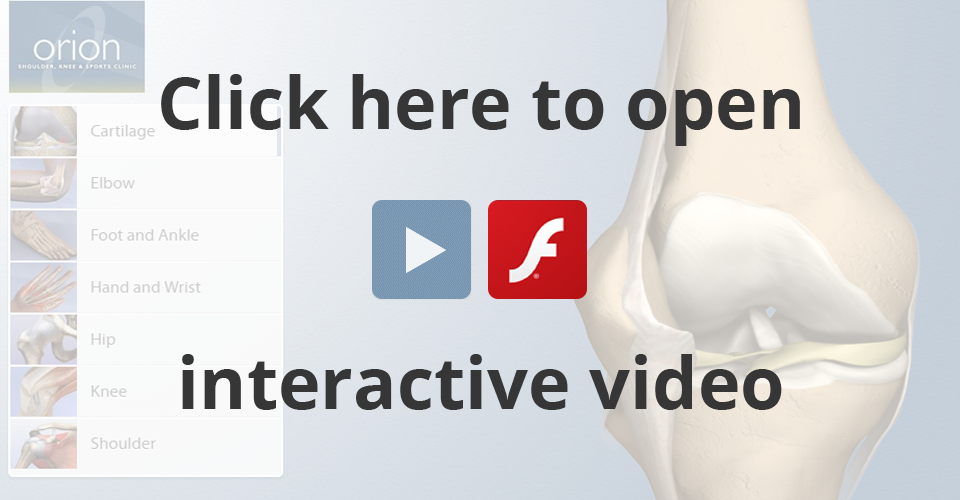Knee Ligament Injuries
The knee is a stable rotating hinge joint. Its stability is achieved by a combination of bony geometry and due to various muscle and ligament groups around the joint. The collateral ligaments are two major ligaments that lie on either side of the knee connecting the thigh bone (femur) with the leg bone (tibia). The outer ligament is known as the lateral collateral ligament (LCL) and the one on the inner side of the knee is called the medial collateral ligament (MCL). These two ligaments lie outside the joint cavity. There are two other major ligaments that lie within the joint and are known as the cruciate ligaments. These are the anterior and the posterior cruciate ligaments. The anterior cruciate ligament (Michael Owen's or Gazza's ligament) prevents the tibia from excessive movement in the forward direction and the posterior cruciate ligament prevents excessive movement of the tibia in the backward direction.

Arthroscopic View of Hamstring ACL Graft
Minor injuries to these ligaments result in sprains which can be treated non operatively and respond to a short period of rest and activity modification. Significant disruption of the ligaments occur as a result of large amounts of force being transmitted across the structures. The anterior cruciate ligament (the ACL) is often injured as a result of significant twisting forces which occur in sport such as skiing, football, basketball, tennis etc but can also occur in normal day to day activities. Significant swelling, pain and bruising at the time of the injury suggests a more serious injury and demands an expert opinion. In the early stages following an injury (acute) clinical examination may be difficult and inconclusive and further investigations are often required in the form of x-rays or MRI scans. MRI scanning in the acutely injured knee is not conclusive and can often be misleading. On occasions the knee may need to be examined under a general anaesthetic with or without an arthroscopy.
Minor ligament sprains can be treated non operatively with rest, activity modification and appropriate bracing. Some ligament disruptions however need to be treated surgically. If the anterior cruciate ligament or the posterior cruciate ligament is avulsed along with a piece of bone this needs to be repaired acutely. If the anterior cruciate ligament is ruptured in its mid-substance then a reconstructive procedure may be required using a graft. A variety of grafts can be used and can be harvested from the person 's own body. The hamstring graft and the patella bone graft (BTB) are the two most commonly used grafts. The idea is to position and fix the grafts accurately so that they can function and provide stability just like the normal un-injured ligament. Anterior cruciate ligament reconstruction is again done as a routine day case procedure but may require an overnight stay particularly if the operation is done in the evening. Through an intensive rehab programme patients return to a normal level of sporting activities within 6-9 months after the operation. At Orion this procedure is done routinely as a day case and using state of the art computer assisted key hole surgery.
Documentation
Pre-op Information PackKnee Physio Protocols ACL Injuries Hamstring Injuries & Surgery
Contact Us Directly
Sarah Morris, Secretary to Mr PimpalnerkarReferral forms to download:

